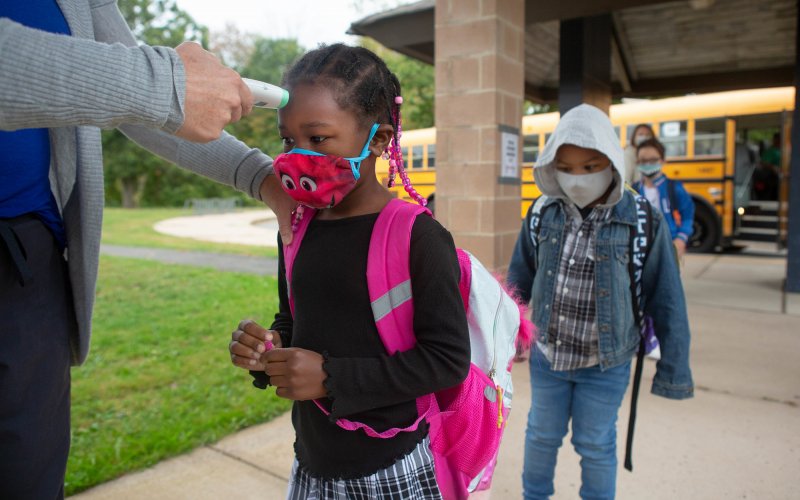Study: Minority Students Faced Greater Barriers to In-School Instruction During Pandemic

ALBANY, N.Y. (July 22, 2021) – As school districts throughout New York develop plans to fully reopen, the learning loss cost of remote instruction, particularly for K-5 and special needs students is getting a new review by researchers at the University at Albany in an article published in JAMA Network Open.
The article, “Sociodemographic Characteristics and Inequities Associated With Access to In-Person and Remote Elementary Schooling During the COVID-19 Pandemic in New York State,” details how by mid-October of 2020, nearly 31 percent of white students in New York had access to full-time in-person instruction, whereas only 8 percent of Hispanic students and less than 6 percent of Black students had access.
Now, as school districts make plans to transition back to in-person instruction, unless school districts prioritize full-time in-person reopening for K-5 students and students with special needs, the learning deficits experienced by traditionally disadvantaged students will be further exacerbated.
UAlbany researchers Ashley M. Fox, Jun Soo Lee, Lucy Sorensen and Erika Martin reviewed data New York district-level reopening plans from the COVID-19 School Response Dashboard. Analyzing outcomes for students from 2,521 public elementary schools within 713 school districts, the researchers found that among the few school districts providing full-time in-person instruction in elementary schools, the majority served predominately white, rural/suburban and advantaged children, and that the differences in COVID-19 burden were not associated with re-opening plans as a possible explanatory factor for different reopening decisions.
Among their findings, the data indicated that disadvantaged students had lower access to in-person schooling, with low-income, English language learner, homeless, disabled and urban students each less likely to have access to schools with in-person instruction.
“We found that among the few school districts providing full-time in-person instruction in elementary schools, the majority served predominately white, rural/suburban and advantaged children, and that differences in COVID-19 burden were not associated with re-opening plans as a possible explanatory factor for different reopening decisions,” said Fox, an associate professor in Public Administration and Policy at the Rockefeller College of Public Affairs & Policy. “This supports concerns that differences in school reopening plans may ‘explode’ existing achievement gaps for marginalized students, and that re-opening plans were not tied to differences in the level of risk across communities.”
With recent evidence suggesting students lost nearly a third of learning between the fall of 2019 and the fall of 2020, the article posits that achievement declines could become further intensified if not addressed with back-to-school plans for the fall of 2021.
“Existing race-ethnic, socio-economic and geographic achievement gaps will be exacerbated absent measures to target vulnerable students for in-person instruction,” said Martin, an associate professor and PhD program Director for public administration and policy at Rockefeller College.
Martin also serves as a joint associate professor of Health Policy, Management and Behavior in the School of Public Health. Author Jun Soo Lee is a PhD candidate in Economics. Sorensen is an assistant professor in Public Administration and Policy.




